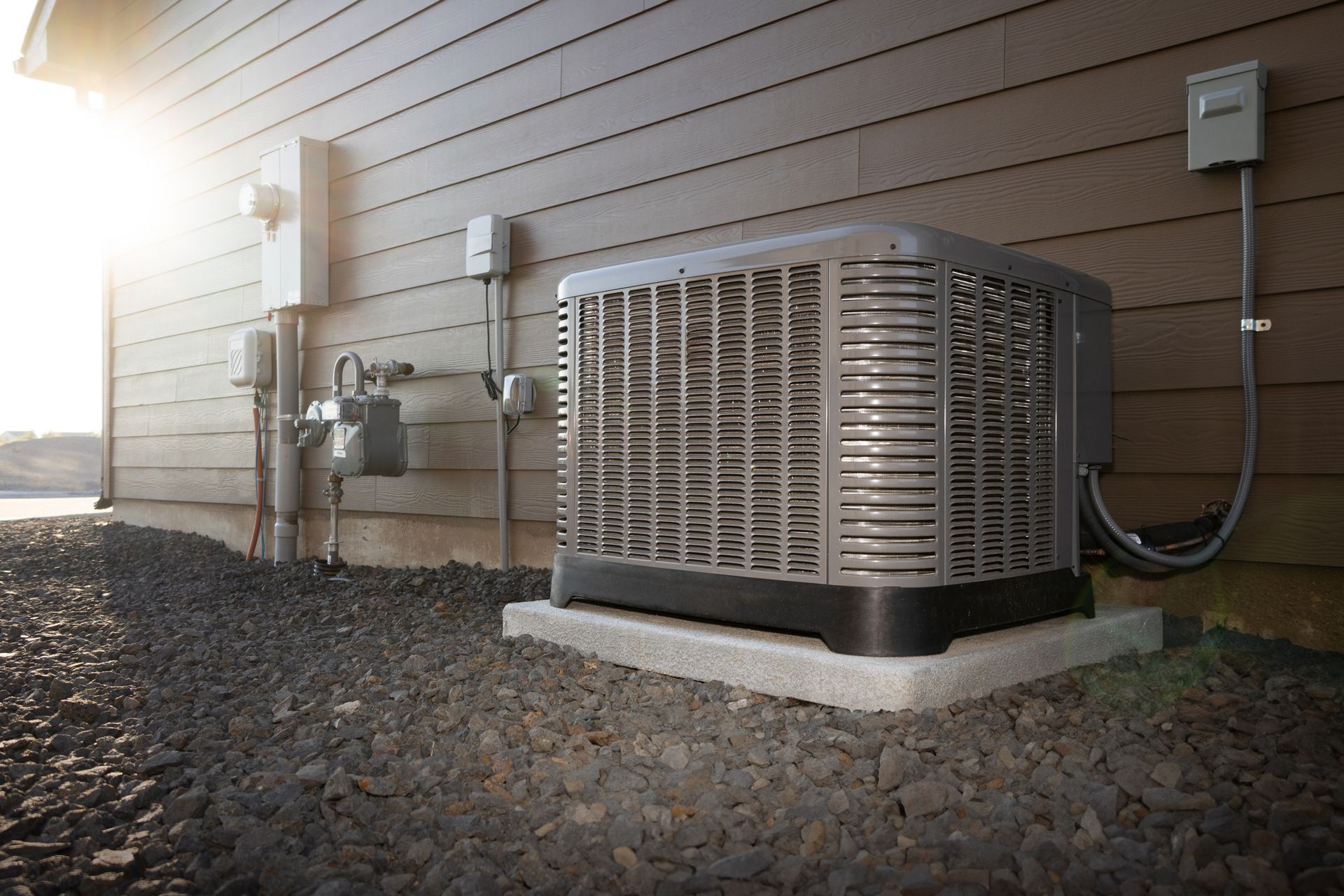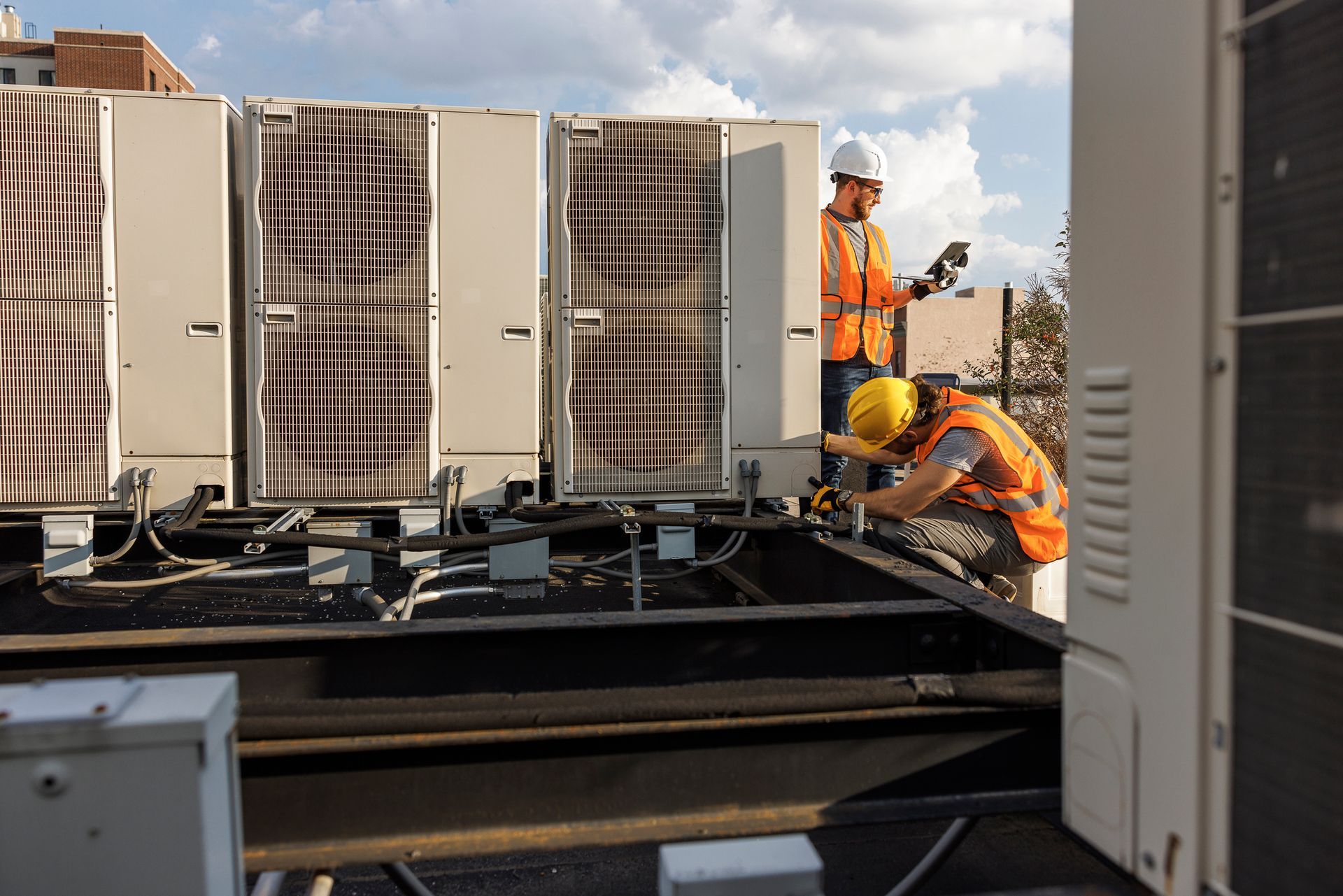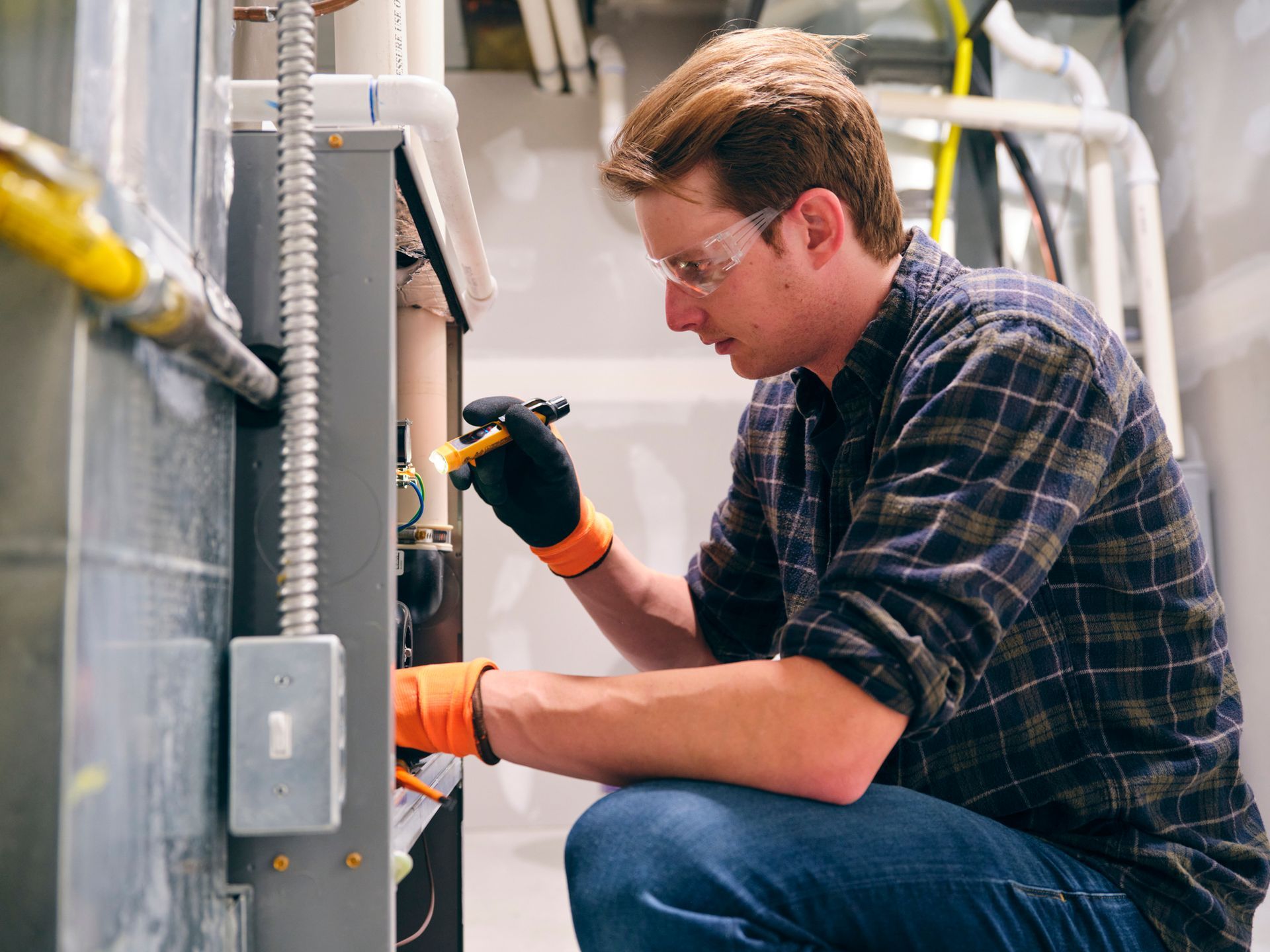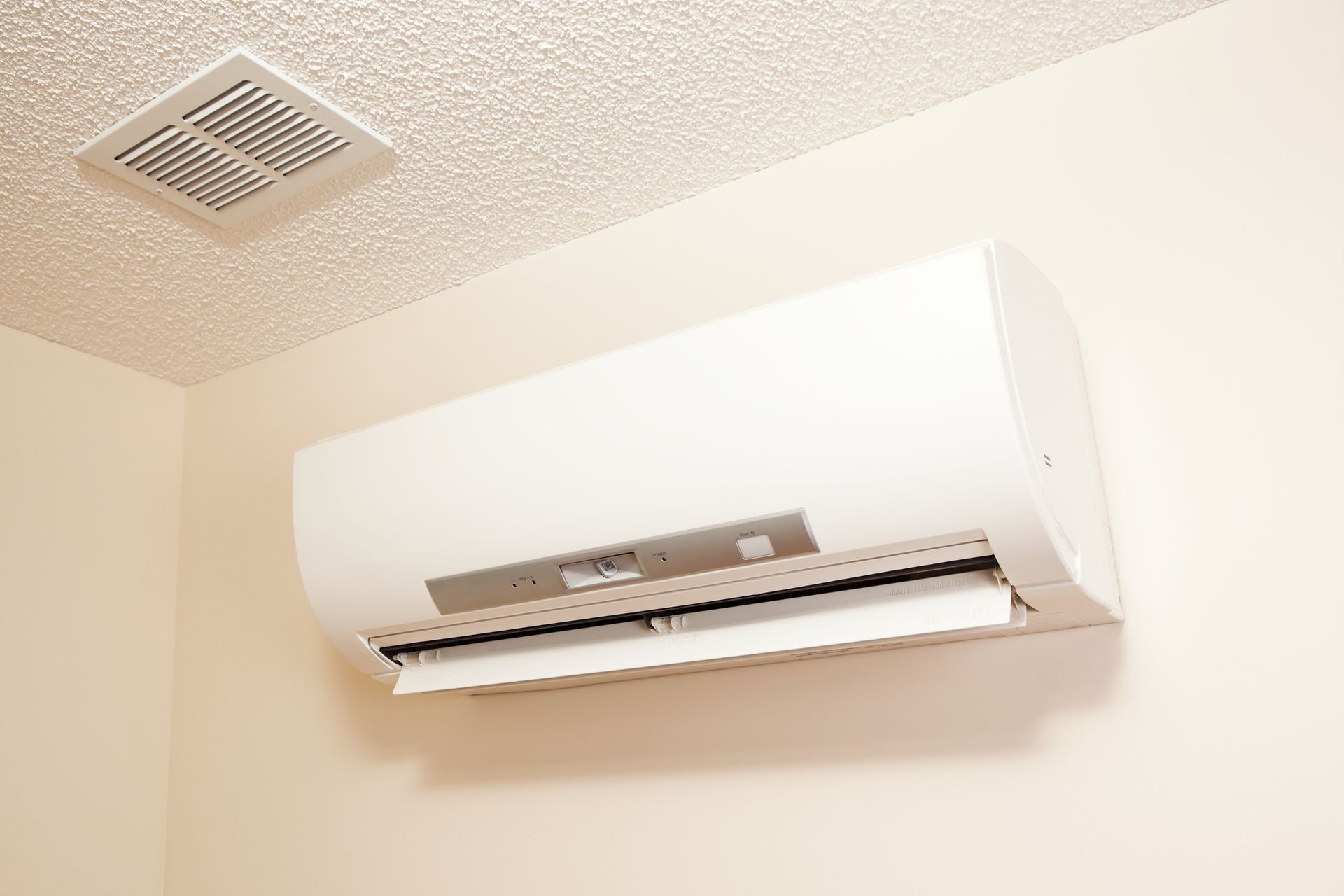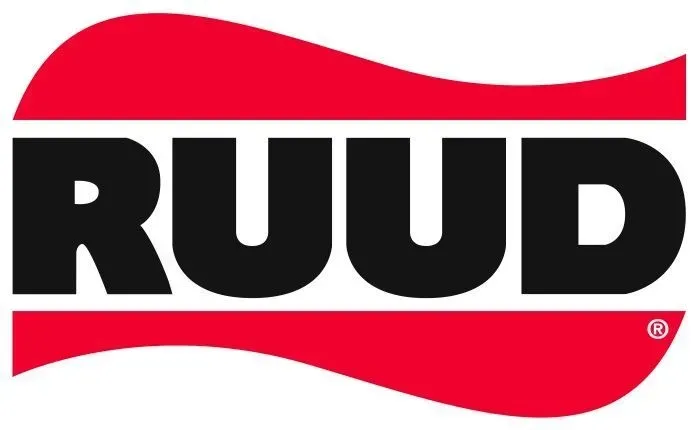Preventing Water Damage from Your AC Unit
A leaking AC unit can do more than leave a puddle on your floor. If ignored, that water can seep into walls, ruin flooring, and even lead to mold. In Draper, homes and businesses rely on air conditioning through the warmer months, and that steady use can slowly wear parts down. By the time water damage becomes visible, it’s usually a sign the problem has been building for a while.
The good news is most water damage from AC units can be avoided. Staying ahead of small issues like clogs, poor drainage, or faulty parts helps keep your unit running clean and dry. Knowing what to watch for, and when to take action, could save you from expensive repairs and a whole lot of cleanup later down the road.
Causes of Water Damage from AC Units
When your AC unit is running, it pulls moisture from the air as part of the cooling process. That moisture has to go somewhere, and if the system isn’t working right, it can end up in places it shouldn’t. A few common problems are usually to blame when water starts leaking inside your home or business.
Clogged Drain Line
Over time, the drain line that carries moisture away from the unit can get blocked by dirt, algae, or debris. When that happens, water backs up and often ends up leaking into nearby flooring or walls instead.
Frozen Evaporator Coil
If the coil freezes, usually due to poor airflow or low refrigerant, the ice eventually melts and can overflow the drain pan. A lot of extra water all at once can overwhelm the system and lead to leaks.
Dirty Air Filter
A clogged air filter can block airflow, which causes the evaporator coil to freeze. This triggers the same flooding issue once the ice melts.
Improper Installation
Poor leveling or disconnected drain lines during installation can send water draining in the wrong direction. Even newer systems can have trouble if they weren’t set up right to begin with.
Rusty or Cracked Drain Pan
The pan under the indoor unit is supposed to catch condensation and direct it to the drain line. If the pan is damaged or corroded, water can drip down through the ceiling or floor.
One Draper homeowner noticed paint bubbling on a hallway wall last summer. Turned out the AC upstairs had a blocked drain line, and water had been dripping into the wall for days before it showed up. A quick fix could’ve stopped it early, but they ended up replacing drywall and repairing mold damage that had already started.
Regular Maintenance Tips to Prevent Water Damage
Many of these problems start small and get worse with time. The best way to stay ahead of water trouble from your AC is regular maintenance. A few easy tasks and periodic checkups can make a big difference in keeping water where it belongs.
Here’s a quick list of what to watch for:
- Change your air filter every 1–3 months to keep airflow steady
- Keep the area around the indoor unit clean and free from dust buildup
- Pour a bit of vinegar down the condensate drain line a few times a year to help clear clogs
- Check for rust or standing water in your drain pan
- Make sure the unit is level and that the drain line is connected securely
- Look at your thermostat settings to avoid running the AC too low, which increases the chance of freezing
Scheduling a professional tune-up once or twice a year is smart, especially before and after the hottest season. A trained technician can spot worn parts or early signs of trouble that might not be obvious if you’re just checking on your own. But even without tools or technical experience, these basic habits can go a long way in preventing unwanted leaks.
Recognizing Signs of Potential Water Damage
Spotting early signs of AC-related water damage can prevent a small issue from turning into an expensive mess. It’s easy to overlook subtle clues, especially when your system seems to be cooling just fine. But water damage has a way of creeping in slowly before it becomes obvious.
Start by looking around your indoor AC unit. Water pooling near the base or dripping around vents is usually a red flag. Even a damp floor in that area on a dry day can suggest a hidden leak. If the AC is on and indoor humidity feels high or there’s a musty smell, your system might not be draining properly.
Other signs to watch for:
- Water stains on ceilings or nearby walls
- Damp carpets or buckling floors near the unit
- Unexpected mold growth or musty smells in rooms near the AC
- Rust marks or corrosion on the system casing
- Ice showing up on refrigerant lines or coils
One homeowner in Draper started noticing peeling paint near the ceiling of a back bedroom. They thought poor ventilation was the issue. After checking the attic, they found the AC’s drain pan had been overflowing for days due to a clogged line. The slow leak followed a beam until it soaked into the drywall. It didn’t seem serious at first, but fixing the ceiling and replacing soggy insulation turned into a major job.
These symptoms are often missed because they don’t seem urgent. But the longer moisture lingers, the more damage it can do. Drywall, subflooring, and trim are all vulnerable, and a damp space encourages mold to spread. Water often travels through hidden areas, so the spot where damage appears may not be where the issue began.
Professional Solutions and When to Call for Help
Leaks, frozen coils, or musty odors shouldn’t be brushed aside. Trying to fix AC problems yourself without the right tools or training can make the situation worse. Some issues, like internal blockages or refrigerant loss, aren’t obvious without opening the unit or doing a full check. This is when calling in a professional makes a difference.
An experienced technician can spot signs that a casual inspection might miss. If something like a tilted base or loose drain connection is causing moisture buildup, it can be fixed before water begins to damage your home. They also know how to detect worn parts or failing components that could lead to bigger system problems down the line.
Here’s when you should call in a technician:
- When leaks happen again and again, even small ones
- If the drain line gets clogged regularly or doesn’t clear with a basic flush
- When ice builds up often on coils or refrigerant lines
- If musty smells return after cleaning or the air feels damp indoors
- If you see new water stains near vents, on the ceiling, or on the wall
Try not to wait until the system fails during peak demand. Reaching out during less busy months means faster service and no long waits. Draper can still have hot days in early fall, so booking repairs before cooler weather settles in is a smart move.
Even well-installed AC systems need repairs from time to time. Fixing small problems early helps you avoid major breakdowns and prevents water damage that could spread beyond just the unit.
Smart Ways to Keep AC Leaks from Ruining Your Space
Leaking water from your AC might not seem like a big deal early on, but it can quickly lead to trouble. What looks like a minor drip today can become a moldy wall or warped floor by next week. A little moisture in the wrong spot is all it takes to cause expensive damage.
By checking your system regularly and watching for early warning signs like puddles near your unit or a musty smell, you can stay ahead of serious problems. These clues don’t go away on their own. If your AC isn’t draining right or you see anything unusual around it, it’s probably a good time to bring in a technician.
Staying ahead of trouble doesn’t have to be hard. Many AC water problems are fully avoidable with regular checkups and quick responses when something seems off. For homes and businesses in Draper, where systems work hard during the summer, a little preventative care can go a long way toward keeping things cool, clean, and dry year-round.
If your system has been acting up or you’ve spotted signs of trouble, it might be time to look into
air conditioning repair in Draper. Count on Comfort Pros Heating & Air to deliver reliable service that keeps your system running like it should.

